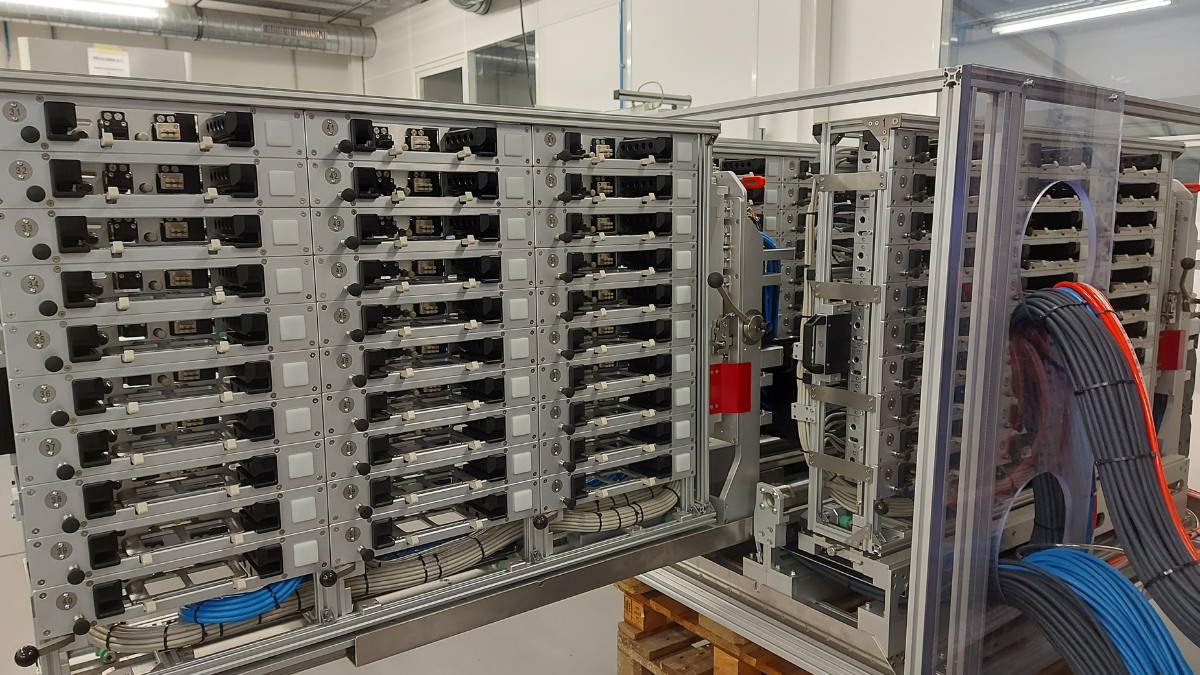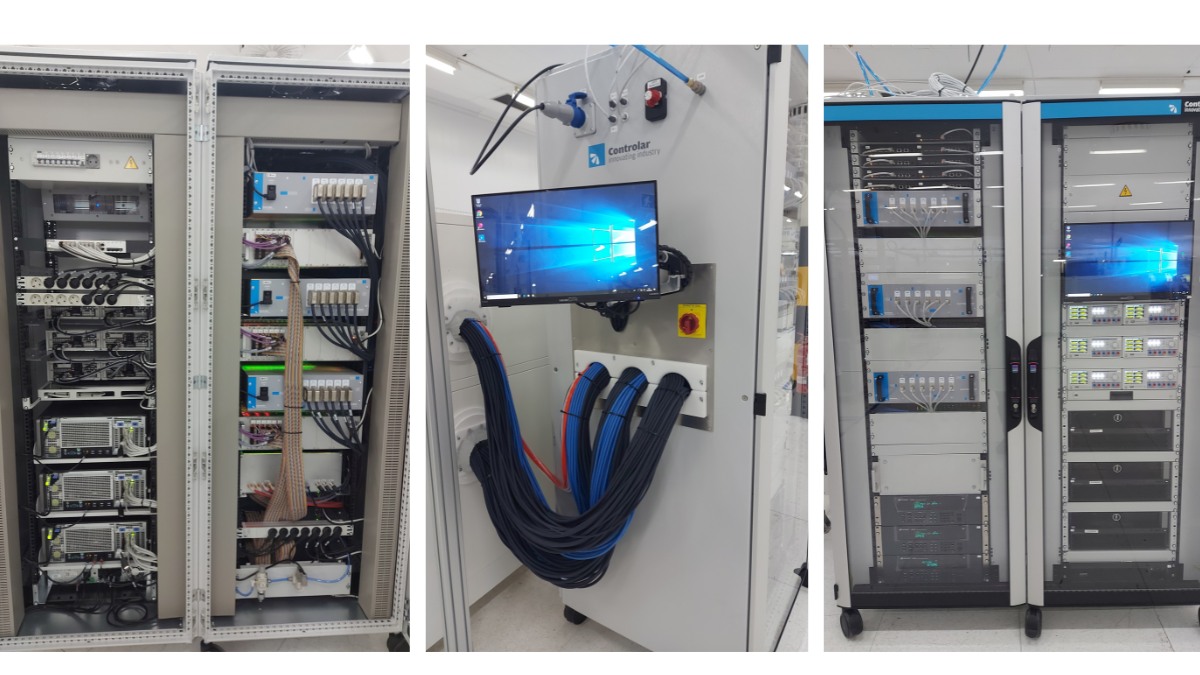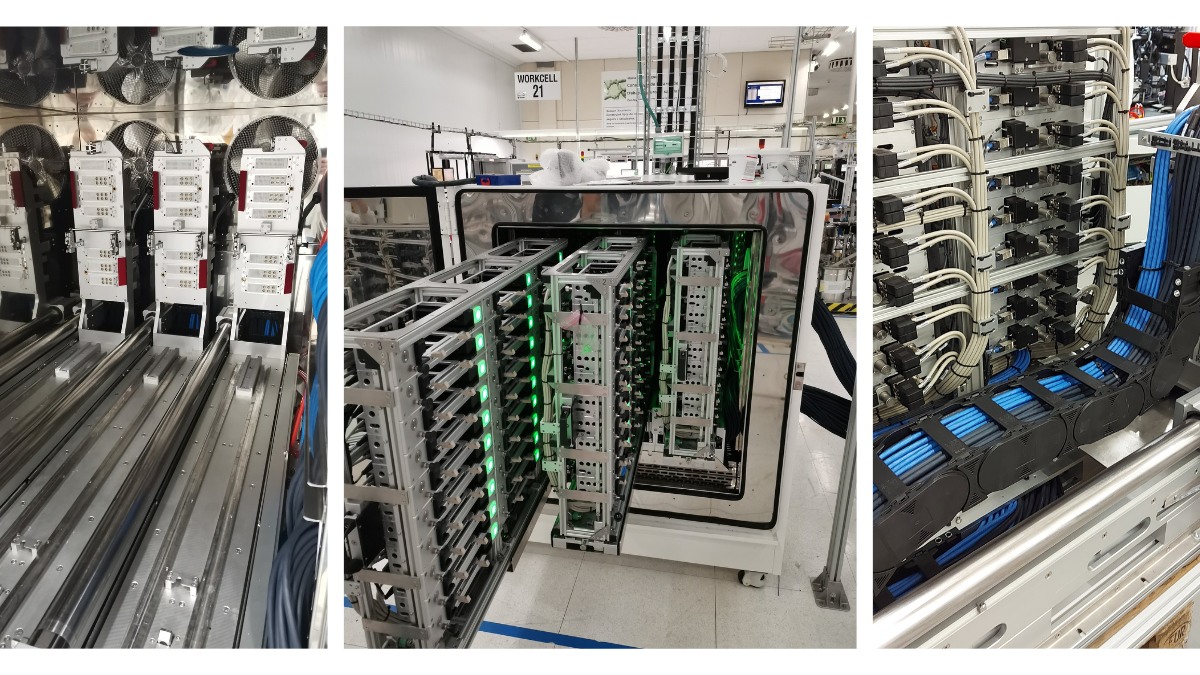As part of a quality control project for large-scale production of electronic equipment, we have recently developed a climatic stress screening system, which will serve as a base model for potential replications to be provided to the customer.
The test solution
Our customer needed to carry out quality control in the large-scale production of ECUs (Electronic Control Units) through functional tests at different temperatures, making the most of the space available on the production line.
ECUs are later applied inside motor vehicles as interface, processing, and management of infotainment peripherals equipment.
Based on its long experience of developing screening test systems, our Test Systems department has therefore developed a solution prepared to test a large number of installed and connected units (90 in total) inside a climatic chamber.
To this end, the system incorporates a climatic chamber (customer property), capable of inducing temperatures of approximately -40ºC and +85ºC in the product. It is equipped with all the necessary test equipment that checks for potential alterations, defects or malfunctions in the units’ features.
The system consists of two parts: an equipment rack and a structure with three jigs and was dimensioned to validate a high number of units simultaneously with signal multiplexing as its base architecture.
This solution is highly modular and cost effective, ensuring cost efficiency, space savings and product reliability.
It is already installed at the customer’s premises in Spain, with the possibility of replication in other locations internationally.
Climatic Stress Screening: the concept
Climatic Stress Screening is a process of subjecting a product to various environmental conditions such as high and low temperatures, humidity, and other stress factors to simulate the real-life conditions that the product may encounter during its use. This screening process is often performed on electronic or mechanical components, as well as finished products, to ensure that they can withstand the environmental stresses they may face.
The goal of climatic stress screening is to identify potential defects or failures in a product before it is released to the market or put into use. By subjecting the product to extreme environmental conditions, any weak points or defects are more likely to surface, allowing for early identification and remediation of issues. This can help to improve the overall quality and reliability of the product and reduce the risk of product failure or safety issues.
Climatic Stress Screening can be conducted using various testing methods, such as thermal shock testing, humidity testing, and temperature cycling, among others. The specific testing method used will depend on the product being tested and the environmental conditions it is expected to face.
For more information on screening testing and Controlar’s solutions, visit: Burn-in and Climatic Stress Screening.







